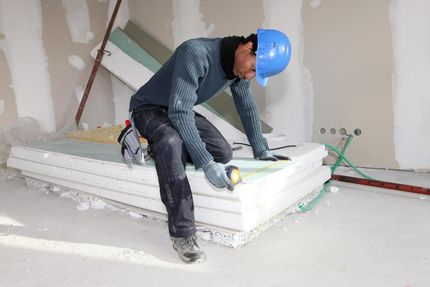Comprehensive Drywall Contractor Assistance for New Builds
Comprehensive Drywall Contractor Assistance for New Builds
Blog Article
Total Overview to Reliable and Trusted Drywall Installment
Drywall installment is an important component of any building or improvement job, demanding a precise strategy to make sure both efficiency and integrity. It is crucial to discover the nuances of each action in the process, as they collectively contribute to the overall success of the drywall installation.
Important Tools for Drywalling
When getting started on a drywall setup project, having the right devices is vital for accomplishing an expert surface. Essential tools consist of a drywall blade, measuring tape, and a T-square, which are fundamental for exact measurements and smooth cuts. A drywall lift is also very valuable, especially for ceiling setups, allowing for easier handling of hefty panels.
For securing the drywall, a cordless drill and drywall screws are necessary. The drill should be outfitted with a drywall little bit to make certain effectiveness and precision. Furthermore, a crucial device is the drywall saw, which promotes reducing about other obstacles and electric outlets.

Furthermore, safety gear such as shatterproof glass and a dust mask are important to ensure personal safety and security during the setup procedure. Utilizing the right tools not only boosts the quality of the installment yet also simplifies the workflow, making the job a lot more reliable total.
Preparing the Area

Following, evaluate the problem of the walls and ceilings. Fix any existing damage, such as openings, cracks, or peeling off paint, to guarantee a smooth and even surface for drywall application. Furthermore, check for electrical outlets, pipes lines, and HVAC ducts, marking their places to prevent difficulties during installment.
It is additionally essential to determine the area properly, establishing the dimensions of the ceilings and walls to determine the proper quantity of drywall required. Develop a thorough strategy that includes the layout and alignment of the drywall panels.
Installment Techniques
Effective setup methods are crucial for attaining a specialist surface in drywall jobs. Appropriate measurement and cutting of drywall sheets are fundamental actions.
When hanging drywall, begin with the leading and job downward, blog ensuring that the long edge of the board is vertical to the framework. Secure the sheets with screws instead of nails, which supply greater holding power and lower the risk of standing out. find more Area screws every 12 inches along the edges and every 16 inches in the field of the board.
For edges, make use of edge beads to achieve sharp, clean edges. When setting up on ceilings, use a drywall lift or have a companion help in holding the sheets in location (drywall contractor). Keep a space of about 1/4 inch over the floor and ceiling to accommodate development and tightening
Finishing Touches

Begin by using joint tape over the joints. This can be either paper or fiberglass mesh tape, with paper being preferred for its sturdiness. Once the tape is in area, it's time to use the initial coat of joint compound, also called mud. Make use of a 10 to 12-inch taping blade to spread out the substance uniformly over the taped joints, feathering the sides to blend with the bordering drywall.
Permit the compound to dry completely, typically 1 day. After drying out, sand the surface area lightly with fine-grit sandpaper to remove any kind of imperfections. drywall fort worth. Repeat the mudding and fining sand process, usually a couple of coats, making sure each layer is flush and smooth with the drywall surface
Typical Blunders to Avoid
Lots of DIY enthusiasts experience mistakes during drywall installment that can endanger the final outcomes. One typical error is failing to appropriately gauge and cut drywall sheets. Imprecise cuts can lead to spaces and irregular seams, making finishing a lot more labor-intensive. Furthermore, overlooking to stagger joints can develop weak points in the wall surface, leading to possible breaking or drooping over time.
Another constant mistake is incorrect attachment. Using too couple of screws or nails can cause loose drywall, while overdriving fasteners can create the paper to tear, weakening the structure. It's crucial to keep regular spacing, commonly every 16 inches, and to ensure that bolts are flush with the surface.
Moreover, not dealing with wetness problems before installment can lead to mold and mildew development and structural damage. Constantly analyze the setting and usage moisture-resistant drywall in high-humidity areas.
Verdict
Effective and reliable drywall setup needs precise interest to information throughout the procedure. By making use of necessary tools, preparing the room adequately, and sticking to ideal methods in installment methods, a flawless finish can be attained. Furthermore, mindful application of his response joint compound and tape during the finishing phase enhances durability and look. Avoiding common errors further contributes to an expert result, underscoring the significance of accuracy and strategy in effective drywall tasks.
It is vital to discover the subtleties of each action in the procedure, as they collectively contribute to the total success of the drywall installment.When getting started on a drywall installment job, having the right devices is essential for attaining a professional finish.For attaching the drywall, a cordless drill and drywall screws are required.Properly preparing the area is crucial for a successful drywall installment.Effective installation techniques are essential for achieving a specialist finish in drywall tasks.
Report this page